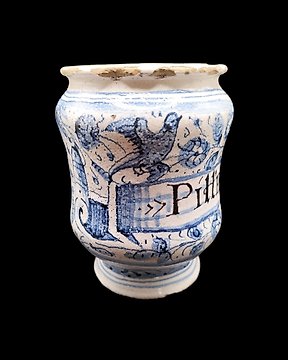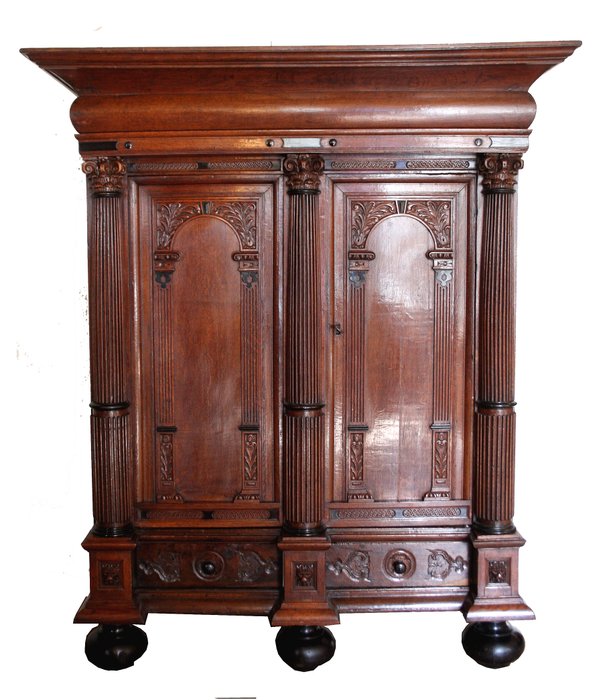
Frasco de farmácia/ Albarello - Farmácia Albarello pintada em tons de azul e branco, com brasão do século XVII - Cerâmica
N.º 47836195

N.º 47836195

Frisian cabinet from around 1650.
(for people not from the Netherlands: Friesland is a province in the north of the Netherlands and Frisian is its own language)
Nice low size of 197 cm.
And surprisingly beautiful interiors.
At the beginning of the 17th century, Frisians started making these cabinets as a showpiece furniture with style elements from the Italian Renaissance.
These cabinets always have a heavy hood, two doors with arches, nice carvings and three heavy pilasters with deep ridges or fluting next to the doors. The type of hood is also called 'cuspidor cap' because the shape resembles a cuspidor.
In the front three ball feet (original).
See also the heavy ribs as cannelures in the columns.
This cabinet has powerful shapes.
Slim, wall to wall 136 cm.
The hood is removable.
At bottom two drawers with carving. See detailed photos.
This cabinet is as beautiful inside as it is outside; with a beautiful interior, see photos.
In perfect condition, once restored by Ad van der Schoot, a good antique dealer from Tilburg.
The lower parts of the hind legs are welded with old oak new parts.
Almost always with cabinets of this age, the hind legs had to be renewed underneath.
Lock works and the key is even original.
Wikipedia;
Frisian cabinet
The Frisian cabinet is a two-door cabinet made in Friesland and West Friesland from 1630.
The cabinet’s curved sleek hood is usually not decorated. In the 18th century, the cabinet’s hood was also painted and gilded, usually with floral motifs. The Frisian cabinet is very similar to a column and counter cabinet. The cabinet has two doors, the oak is carved with angels, birds, flowers and garlands, furthermore the cabinet is decorated with ebony or rosewood. Also, the cabinets sometimes have motifs from classical antiquity.
The cabinet is the most famous piece of furniture from the time around 1630. The panels in a carved arch shape on two pilasters are characteristic of this piece of furniture and have a roof that usually has no carving.
The name “keeftkast” comes from the Oudfries and was a common name for cabinet. Probably the word “keeft” has to do with the word “kievit”, or lapwing, a bird species that was often depicted on cabinets.
Como comprar na Catawiki
1. Descubra algo especial
2. Faça a licitação vencedora
3. Faça um pagamento seguro